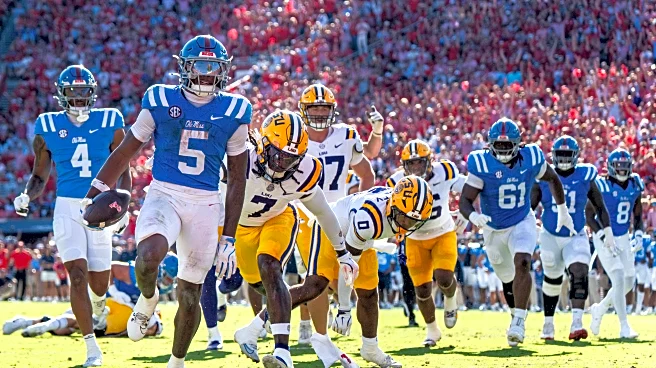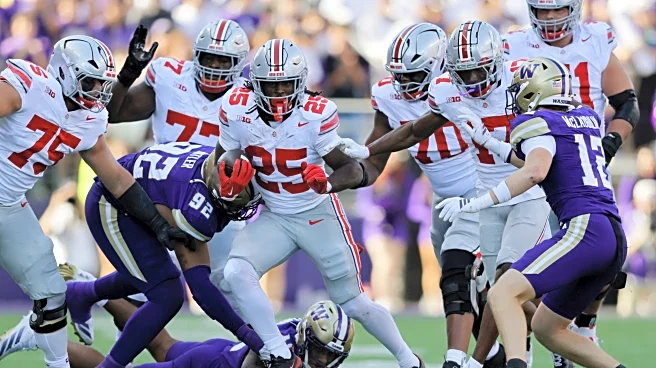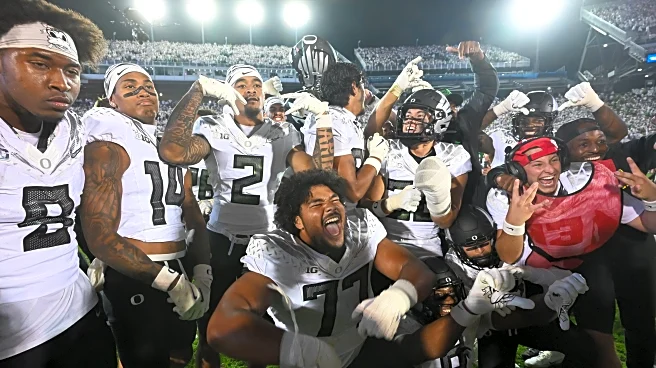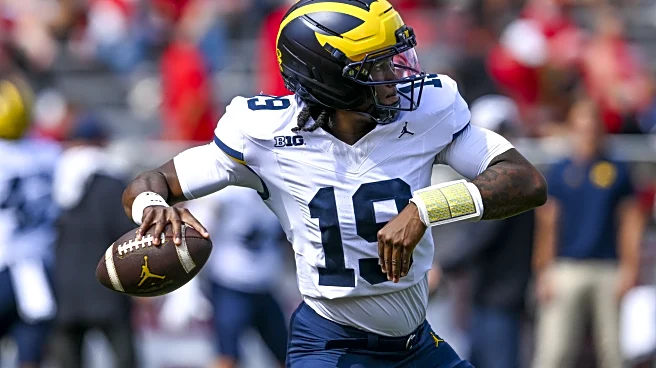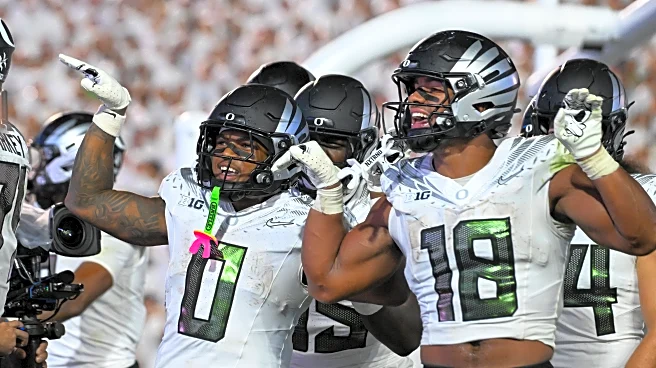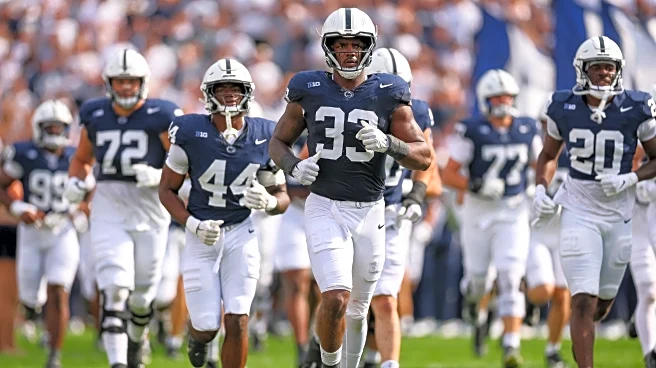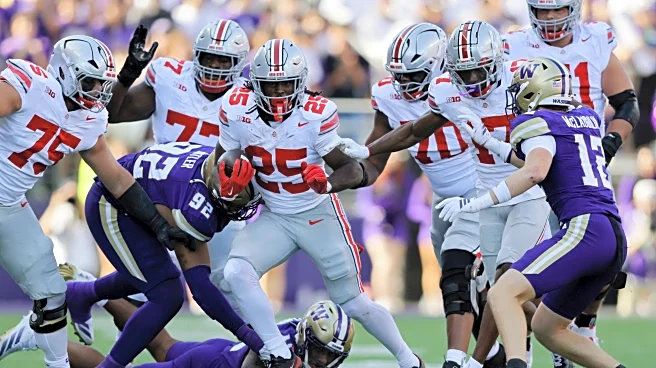What is the story about?
What's Happening?
Oregon has ascended to the No. 2 spot in the AP Top 25 college football rankings following a significant road victory against Penn State. The Ducks secured a 30-24 win in double-overtime, with Dante Moore connecting with Gary Bryant Jr. for a decisive 25-yard touchdown. This victory has propelled Oregon up the rankings, while Penn State has dropped to No. 7. The weekend also saw Alabama defeating Georgia, resulting in Alabama moving up to No. 10 and Georgia falling to No. 12. Additionally, Arizona State and Virginia achieved notable wins, impacting the rankings of TCU and Florida State.
Why It's Important?
The reshuffling of the AP Top 25 rankings highlights the dynamic nature of college football, where each game can significantly impact team standings. Oregon's rise to No. 2 underscores their strong performance and potential as a contender for the national championship. The changes in rankings can influence team morale, recruitment, and fan engagement. For teams like Penn State and Georgia, the losses may prompt strategic reassessments. The rankings also affect bowl game selections and playoff considerations, making each game crucial for teams aiming for postseason success.
What's Next?
As the college football season progresses, teams will continue to vie for top positions in the rankings, with upcoming games offering opportunities for further shifts. Oregon will aim to maintain their high ranking, while teams like Penn State and Georgia will seek to recover and improve their standings. The impact of these rankings will be closely watched by fans, analysts, and stakeholders, as they influence playoff predictions and bowl game invitations. The competitive nature of the season promises more thrilling matchups and potential upsets.
Beyond the Headlines
The rankings not only reflect team performance but also influence broader aspects of college sports, including media coverage, sponsorship deals, and university prestige. High rankings can enhance a school's visibility and attract prospective students and athletes. The cultural significance of college football in the U.S. means that these rankings are closely followed by a wide audience, impacting local economies and community engagement.
AI Generated Content
Do you find this article useful?



